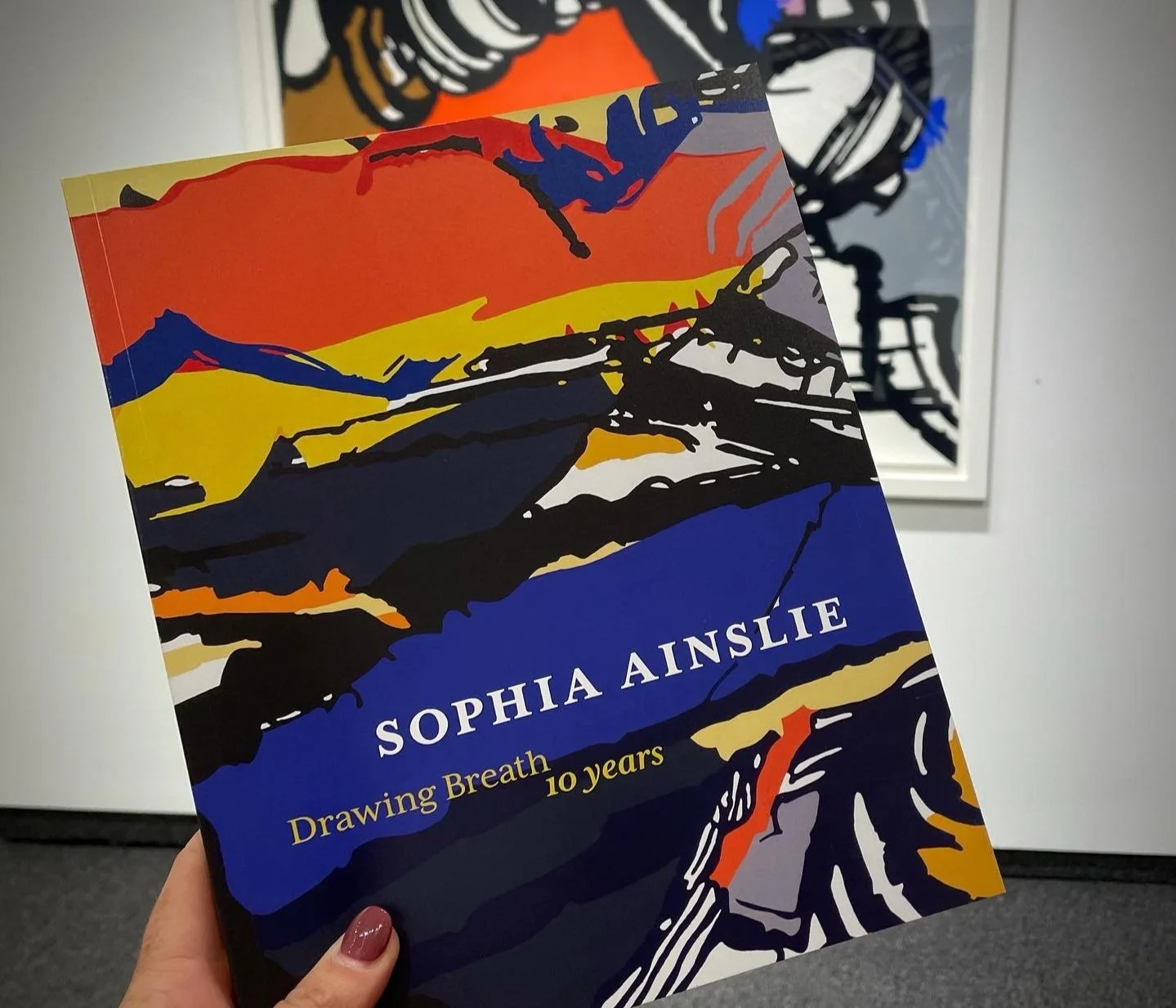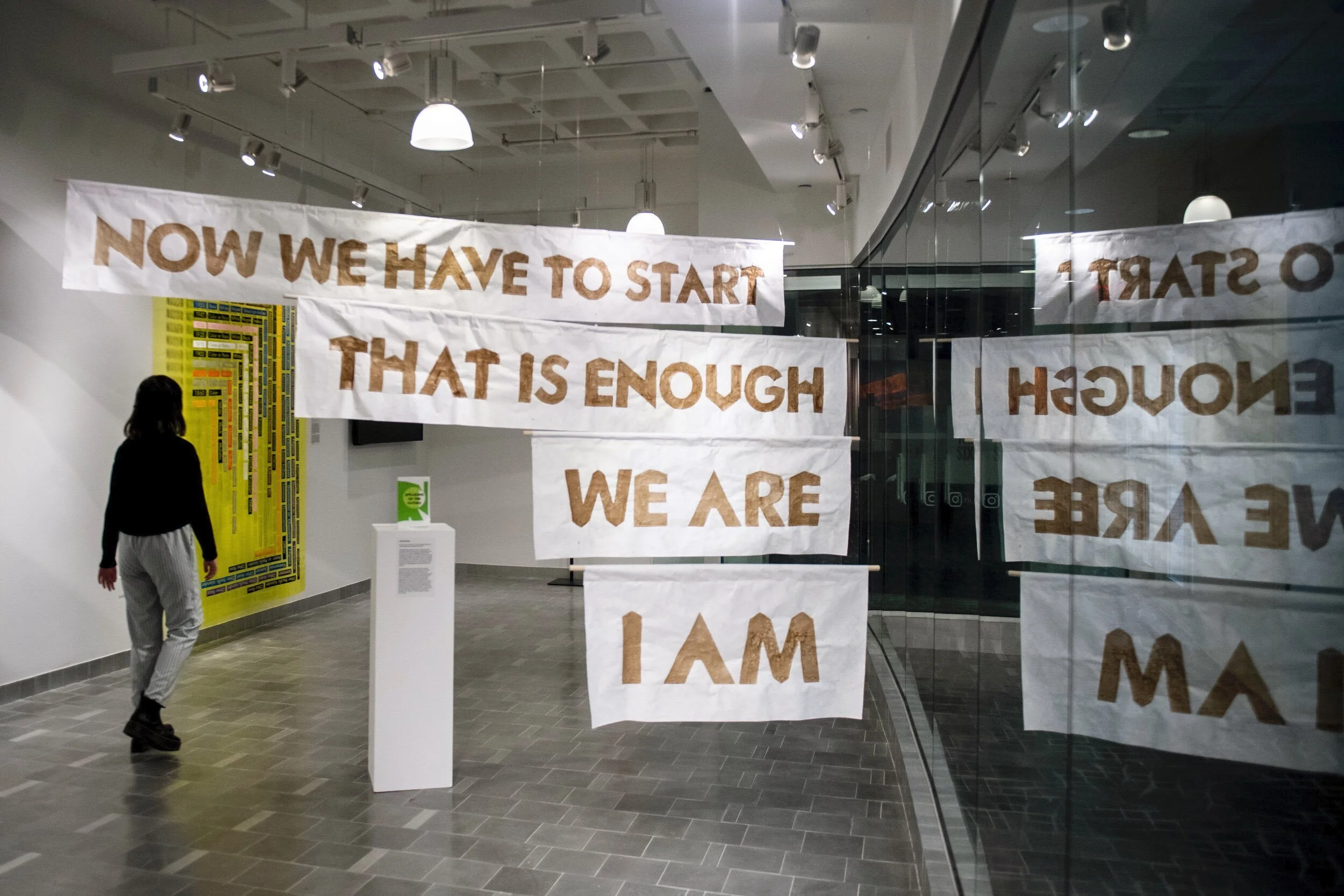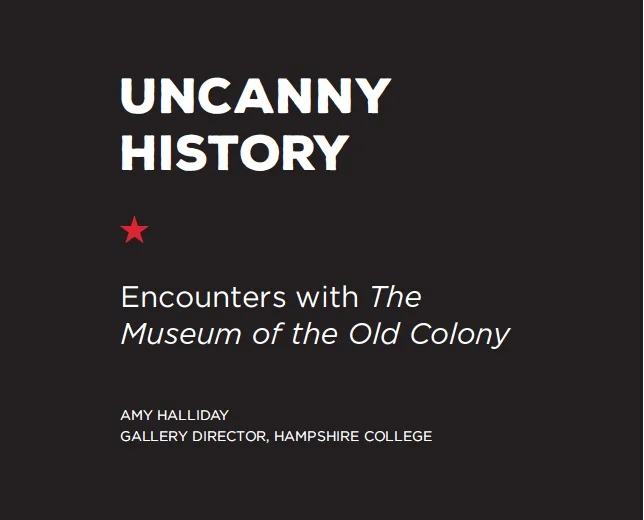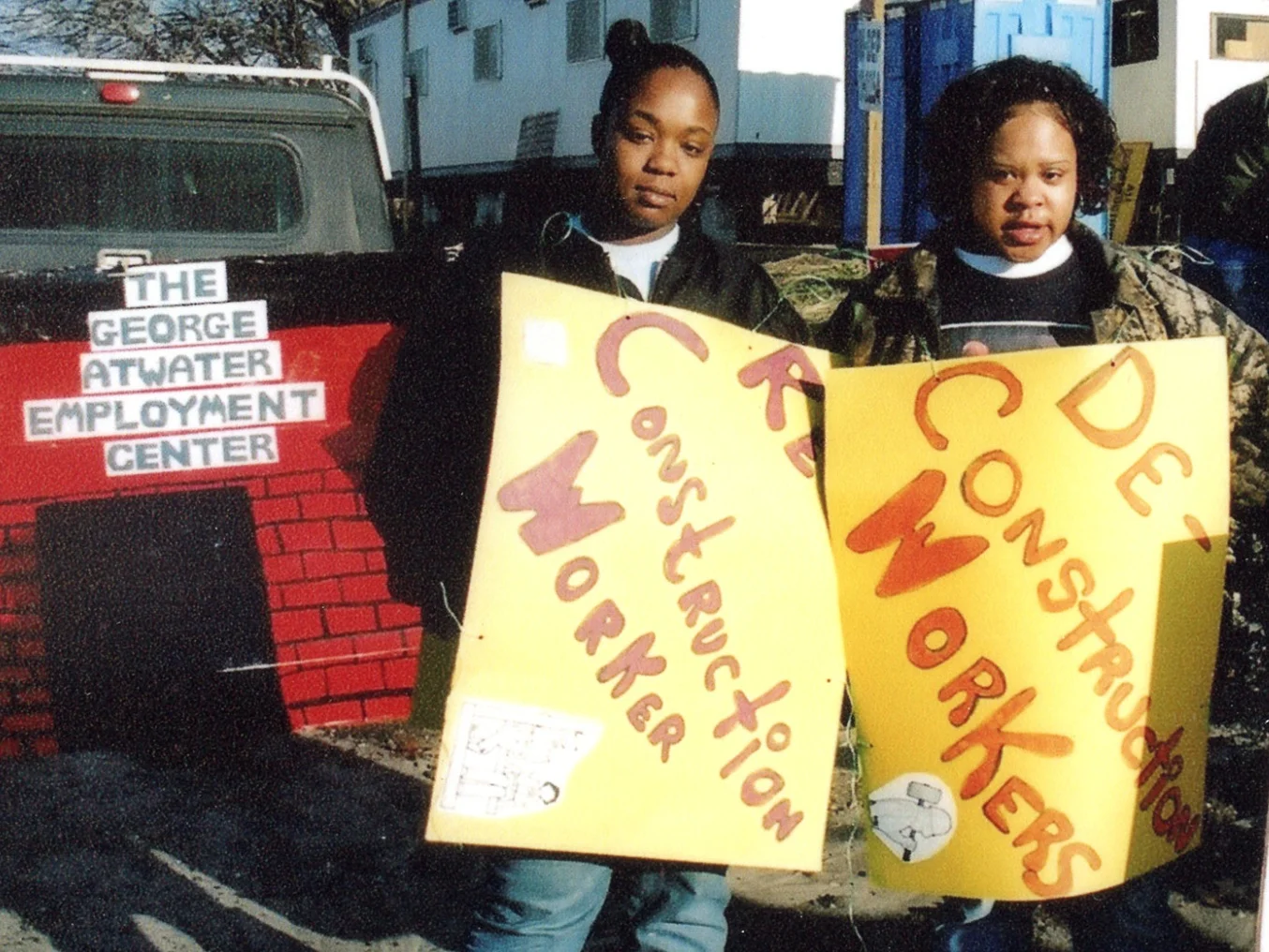Writing: Catalogues, Labels, and Public Engagement
From wall labels to journal articles, I’m interested in the craft of writing as a means of engaging diverse audiences meaningfully with art and ideas; supporting artists’ practices; and facilitating (self-) reflection and learning.
Get in touch if you’re looking for critically-engaged, original art research and writing for:
exhibitions (labels, brochures, wall text)
publications (exhibition catalogues, journals, popular press)
website text and artist’s statement review/editing
promotional material/press releases
Writing Samples
2024: ‘liminal landscapes, ambivalent futures’. expanded brochure: tamera avery. on the occasion of the artist’s debut solo museum exhibition at the triton museum of art, santa clara, Ca
This short essay explores liminality - political, social, and environmental - as a space of both possibility and threat, anxiety and hope; a space that young people are constantly navigating as they come of age in a time of crisis. Catalyzed by Avery’s first solo museum exhibition, the piece expands on some of the show’s curatorial themes while applying more broadly to her practice.
2023: ‘curating spaces of [un]learning’. with helina metaferia and clare butcher. journal of arts & communities, vol 14, 9-30.
Through an edited conversation with fellow curator-educator Clare Butcher and artist-scholar Helina Metaferia, we explore curatorial and artistic practices of (un)learning in university galleries/museums, biennial programming, and research-based collaborations.
2022: ‘the art museum is full of chairs.’ zine essay, vol 1, accompanying ‘feed chair’ installation
It seems the art museum is FULL of chairs (in art), but there is NOWHERE to sit. ESPECIALLY if you're trying to find somewhere to feed your baby... This essay is part of a zine accompanying the Feeding Chair installation, a collaborative artwork which invites carers to feed their babies in public spaces.
2022: ‘darrell petit: sculpture’. expanded brochure. written and designed in collaboration with the artist and photographer sean kernan.
With two major commissions in the city of Boston over the past few years, and monumental works that live as vibrantly in urban space as in natural settings like Storm King Art Center, Montreal-born and Massachusetts-based sculptor Darrell Petit's extraordinary practice is a pleasure to write about.
2021: ‘sophia ainslie: drawing breath’. catalog essay. sophia ainslie: drawing breath - 10 years. gallery naga. boston. 12-29.
Commissioned for the artist’s solo exhibition at Gallery NAGA, this essay explores a decade of Sophia Ainslie’s abstract painting practice and its visual choreography of body and landscape, interior and exterior, microscopic and macroscopic.
2021: ‘now we have to start’, dream boston, exhibition catalogue. 6-11.
Following on from co-curator Miranda ADEkoje’s reflections on being asked to “dream Boston” as a playwright and a curator, this essay explores the ways in which the seven artists featured in the group exhibition respond to this call, and how a local audience is implicated in turn.
2020: ‘STAYing WOKE: Participatory Politics in Helina Metaferia’s Practice’, against a sharp white background, exhibition catalogue. 8-13.
Complementing Sarah Stefana Smith’s reflection on Helina Metaferia’s performance work for the catalogue of ‘About a Sharp White Background,’ this essay explores the participatory elements of Helina Metaferia’s artistic practice.
2020: HALLIDAY & MOORE, ‘ARTists are essential workers: considering the role of art in public health,’ boston art review, issue 5, june 2020
As the recent CultureRx initiative from the Massachusetts Cultural Council reflects, music, dance, theatre, visual arts, and expressive writing might all be leveraged as powerful public health interventions. Based on the extant research on the arts and public; interviews with cultural practitioners, health clinicians, and city officials in Boston; and examples of artists’ practices during the time of Covid-19, this article discusses some of the ways in which artists might be considered essential workers in supporting individual and societal wellbeing.
2019: Dobro, Halliday & Keats, ‘The Plasmodium Consortium: When Art, Science, and Design Form a POLICY THINK TANK’. world scientific.
This invited textbook chapter explores how a curator, a philosopher, and a biologist formed a highly unusual policy think tank with plasmodial slime mold Physarum Polycephalum, enlisting their bio-intelligence and non-partisan nature to address pressing global issues in a sequence of curriculum-integrated courses, interdisciplinary faculty seminars, an exhibition and symposium.
2018: uncanny history: encounters with ‘the museum of the old colony’. the museum of the old colony, exhibition catalogue. 18-38.
Pablo Delano’s conceptual art installation The Museum of the Old Colony is assembled from a continually-growing collection of more than a century of archival imaging of Puerto Rico and Puerto Ricans. The essay explores the artist’s use of the materials of the past to call the present (US-Puerto Rico relationship) into question.
2018: ‘COLLABORATION: the plasmodium consortium at hampshire college’, sciart magazine, april 2018
A summary of the interdisciplinary thinking and collaborative practice - human and non-human - underpinning The Plasmodium Consortium project, and featuring photographs documenting various parts of the process.
Halliday, miller & peterson, ‘states of incarceration and history as an agent for social CHAnge’, Museums & Social Issues 12(1)
As the exhibition States of Incarceration: A National Dialogue of Local Histories travels the nation, visitors will explore the roots of mass incarceration in our communities. This article argues that women’s incarceration and the gendered aspects of the carceral state need to become more prominent in the national narrative, and that museums and public history institutions, in partnership with local communities, have the potential to lead this effort.
2015: ‘The human/animal in contemporary South African photography’, journal of african cultural studies (jacs), 44-60.
By looking at work by two contemporary South African photographers - Pieter Hugo and Daniel Naudé - this article examines some of the ways in which notions of ‘the animal’ intersect with human subjectivity and representation. Invoking ideas of the ‘wild’ in structuring perceptions of socially marginalized groups, Hugo’s ambivalent portraits have been accused of exoticising, and eroticising, black masculinity, but, read through Donna Haraway’s conceptualization of companion species, may open up new readings of human/animal relationality. The ‘tame’ is no less contested: Daniel Naudé’s ‘Animal Farm’ focuses on livestock breeds, demonstrating that domesticated animals can become a site of anxiety around human ‘pedigree’ too.
2015: ‘Robert S. Duncanson and the Birthright of Landscape’, The Common, March 6
This article explores the work of C19th African American painter Robert S. Duncanson in the context of Hudson River school founder Thomas Cole’s notions of beholding and representing the landscape as a foundational right and expression of citizenship. Cole uses the term in the broad sense of a natural or moral right, possessed by all Americans, yet precisely who counts as American—and may thus freely partake of this natural patrimony—at this historical moment is fraught.
Daniel Naudé. Ben Fyfer, an Nguni Cattle farmer, at his desk. Louwna, North West Province, 2 March 2010. C-print. ©Daniel Naudé.
2013: ‘Livestock, Identity, and the Social Imagination in South Africa,’ in Beinert, Middleton, and Poole (eds.) , Wild Things: Nature and the Social Imagination, The White Horse Press. 6 -92.
Taking the contemporary practice of South African photographer Daniel Naudé as a starting point, this book chapter explores the role of livestock in their persistent significance to South African livelihoods. Moreover, informed by colonial traditions of animal portraiture, agricultural display, and emergent eugenic discourses in the twentieth century, it traces how livestock bodies were historically mustered as a means of mediating (and projecting) human anxieties over race, “purity” and “pedigree.”
















